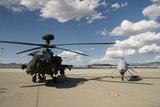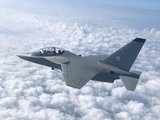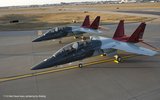I/ITSEC 2022: How the US Marine Corps' future vision will impact the training & simulation industry
The US Marine Corps are supporters of synthetic training but great believers in live fires, (Photo: US DoD)
The Program Manager for Training Systems (PM TRASYS) and US Marine Corps Training and Education Command (TECOM) gave a briefing to industry to update them on future programme requirements during day two at I/ITSEC in Orlando.
‘We have currently got 24 programmes with more on the horizon,’ reported John Taylor, Deputy PM at Orlando-based PM TRASYS. For this year, that represents a $379 million annual appropriation.’
The US Marine Corps views its Project Tripoli as an overarching goal in procuring future integrated LVC training systems said TECOM's Lt Col Michael Donaldson. ‘We need to focus on connectivity as we’re facing issues with legacy systems,’ but addressing the live-virtual balance he added, ‘never, ever, ever tell a marine you’re going to take away his bombs and bullets and give him a computer to train on. That conversation never goes well.’
Related Articles
Fireside Chat forum speakers stress need for training acceleration at I/ITSEC 2022
History repeating at I/ITSEC 2022 Senior Leader Panel
‘Never, ever, ever tell a marine you’re going to take away his bombs and bullets and give him a computer to train on. That conversation never goes well.’— Lt Col Michael Donaldson, USMC TECOM
That is perhaps why the corps has a number of programmes that are looking at enhancements to live training. Archie White, head of range requirements at TECOM explained: ‘We’re looking at areas such as the rationalisation of our MOUT sites, next-generation targets for force-on-target training, improved instrumentation and AAR for laser-based combat training as well as enhancements to MCTIS.’
MCTIS, or the Marine Corps Training Instrumentation System, sees Saab providing laser-based tactical engagement systems for an initial ten battalions, with a full requirement of 16. It also establishes support operations at primary USMC installations and off-station remote training sites.
MCTIS forms part of the corps’ Force-on-Force Training Next programme that itself is part of the Project Tripoli I-LVC environment.
Donaldson made the point that in addition to the USMC’s expanded requirements in the S&T field, it also needs to look more closely how it trains for ‘cyber warfare and space operations’ both of which are playing an increasing role in modern conflicts.

TMIT range targets have proven popular and effective with the USMC. (Photo: USMC)
Staying in the live domain, Lt Col Troy Peterson, PM Range Training Systems, told the audience that the corps was now in the market research phase for its Known Distance Automated Scoring (KDAS) system to provide hit/miss distances on firing ranges. He added that the USMC is also talking to industry about its Live Fire Evaluation Tool (LFET) requirement for 32 systems.
He also discussed the Trackless Mobile Infantry Targets (TMITs) that are being provided under a service agreement by Marathon. These are clearly proving popular as Peterson said ‘marines cannot get enough of TMITs’. The corps ‘is looking to place an ID/IQ contract shortly’.
TRASYS Product Manager Synthetic Training Systems then provided an update on a number of ‘pending requirements’ including the Battle Staff Training System (BSTS), Small Unit Tactical Training System (SUTTS), Ground Vehicle Training System (GVTS) and Enterprise Ground Maintenance Training System (EGMTS).
The final programme discussed by Robyn Ingerham from TRASYS is an underwater egress trainer that will see an RfP issued in Q3 next year and a contract award expected in Q4 2023.
Shephard's I/ITSEC 2022 coverage is sponsored by:

More from I/ITSEC 2022 Show Portal
-
![I/ITSEC 2022: HII enhances human-machine teaming training for US Army]()
I/ITSEC 2022: HII enhances human-machine teaming training for US Army
HII’s crewed-uncrewed teaming training system has been tested with the US Army’s Apache, but it can operate with any autonomous system with the right equipment to receive data.
-
![All the news from I/ITSEC and talking seabed warfare]()
All the news from I/ITSEC and talking seabed warfare
The Shephard Media news team looks at all the developments in the military training and simulation world, and discovers the trends and challenges in seabed warfare.
-
![Leonardo explores 6th-generation combat aircraft simulation at I/ITSEC 2022]()
Leonardo explores 6th-generation combat aircraft simulation at I/ITSEC 2022
Leonardo is developing the Smart Chair system in its Battle Lab that allows for advanced pilot training for multi-domain scenarios and can potentially 'replicate a sixth-generation fighter jet cockpit'.
-
![I/ITSEC 2022: Red Hawk jet trainer to be digital platform from day one]()
I/ITSEC 2022: Red Hawk jet trainer to be digital platform from day one
Boeing's T-7A Red Hawk simulator and maintenance training system will allow pilots and ground crew to train in novel ways as soon as the platforms are delivered.
-
![I/ITSEC 2022: Saab stays focused and committed to multi-site training delivery]()
I/ITSEC 2022: Saab stays focused and committed to multi-site training delivery
Saab has increased training activities across core markets, opened combined training centres and is set to grow its business further.
-
![I/ITSEC 2022: CAE to create ‘data ecosystem’ in synthetic environment and rethink approach to innovation]()
I/ITSEC 2022: CAE to create ‘data ecosystem’ in synthetic environment and rethink approach to innovation
CAE believes the future of training technologies will be fundamentally driven by bringing different industries together and no single company can exist in a vacuum - an approach that defence should adopt too.

























